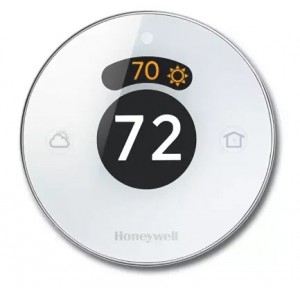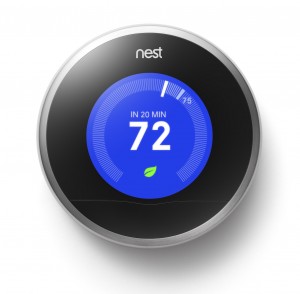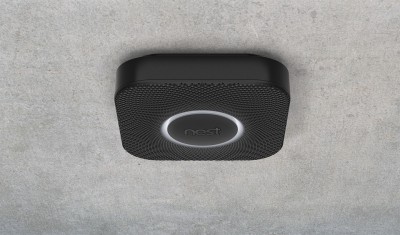 When Nest, a startup co-founded by former iPod honcho Tony Fadell, announced its classy, web-enabled, touch-screen thermostat back in the fall of 2011, you just knew that Honeywell–long the biggest name in thermostats–would have to respond.
When Nest, a startup co-founded by former iPod honcho Tony Fadell, announced its classy, web-enabled, touch-screen thermostat back in the fall of 2011, you just knew that Honeywell–long the biggest name in thermostats–would have to respond.
It did. First, it sued Nest, saying that the company’s design violated Honeywell patents. And then it came out with some models which felt like they split the difference between what Nest was doing and earlier Honeywell high-tech efforts–in one case offering voice control as a differentiating factor.
Now Honeywell is back with the Lyric, a $279 thermostat which is available now through professional installers and will arrive at Lowes stores in August. (Nest, which is now part of Google, sells its thermostat for $249.)
Like the Nest–and unlike Honeywell’s previous web-savvy thermostats, which were rectangular and utilitarian–the Lyric is round and stylish, with a circular LCD display in its center. The look isn’t identical to the Nest, but it’s very, very similar; perhaps to refute any impressions that it’s shamelessly ripping off its rival, Honeywell points out on the Lyric’s packaging that it’s been manufacturing an iconic round thermostat since the 1950s.

The Nest thermostat
It’s not just the shape of the Lyric which is Nest-esque. Judging from a demo Honeywell recently gave me, the new model has more of the polished, consumer-electronics feel which made the Nest so strikingly different from Honeywell’s past efforts. Even more than the Nest, it looks like a snow-white iPod reborn as a piece of tastefully minimalist household instrumentation. (LEDs give it a colored “halo” of light with an informational purpose: orange means it’s heating, blue means it’s cooling, and green means it’s conserving energy.)
Functionality-wise, the Lyric aims to distinguish itself from the Nest without resorting to gimmicks such as voice commands. One of the key differences is how the thermostat keeps tabs on your family’s whereabouts, so it can set the temperature to your liking when you’re at home, and focus on energy savings when you’re not. The Nest does that using a motion sensor which detects when people are in the vicinity, learning about your schedule over time.

The Lyric app
The Lyric has a motion sensor, too–one which it uses to put itself into an interactive mode when it notices you’ve approached. But for monitoring whether you’re at home at all, Honeywell’s thermostat leverages its iOS and Android apps. Your phone tracks your location via GPS and reports it back to the thermostat, so the Lyric knows if you’re around the house or at a distant location. And if it notices that you’re headed home, it can begin to adjust itself so that the temperature is ideal by the time you arrive.
Honeywell says that this approach is superior to Nest’s learning-through-motion-detection technique because it doesn’t involve guesswork: The Lyric knows where you are even if you aren’t following your normal routine. It sounds logical, as long as everyone in the family has an iPhone or Android handset. (Alternatively, you can, of course, simply use the Lyric like a conventional thermostat, adjusting it yourself once you get home or on a schedule.)
The Lyric has some other advantages over the Nest, according to Honeywell. For instance, it uses an algorithm to fine-tune the temperature based on multiple factors, such as the humidity inside and outside the house, which Honeywell says results in a 72° that really feels like 72°. It also uses its apps to alert you to matters such as the need to change an air filter.
And in a move which strikes me as particularly clever, it ditches a traditional installation manual in favor of stepping you through its do-it-yourself setup process using your smartphone–even using the phone’s camera to let you snap a picture of the wiring for later reference.

Honeywell’s original, iconic round thermostat
If there’s an alternate universe out there where Nest was never founded, it seems unlikely that Honeywell would have invented anything which much resembled the Lyric. Tony Fadell and his team redefined a sleepy category, and the Lyric responds to the Nest both by being similar and attempting to outdo it.
But even if the Lyric is reactionary rather than revolutionary, it seems to be a credible product. Honeywell says that it’s the first in a new generation of smart-home devices which the company will deliver, all of which will be controllable by one unified app. That’s a far more inspiring way to respond to the challenge presented by Nest than by engaging in interminable patent warfare.







